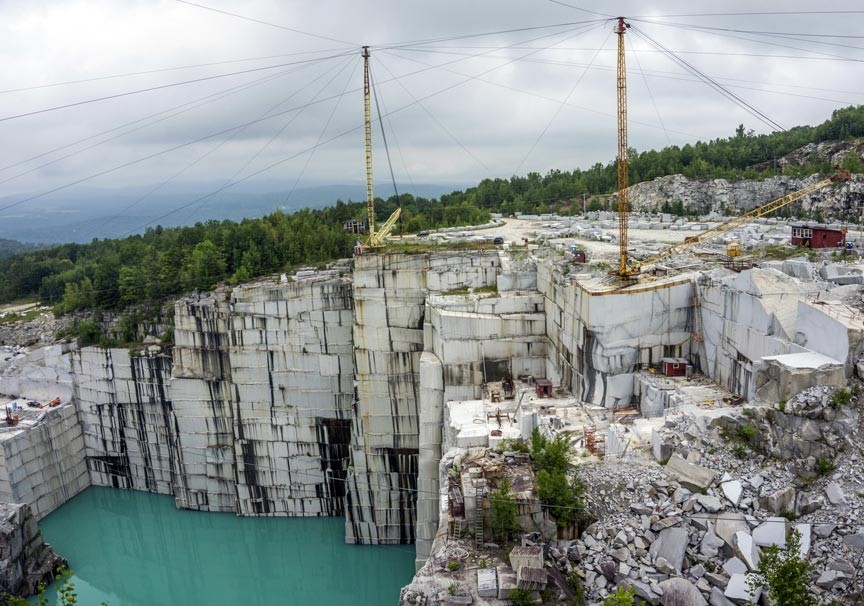Unveiling Granite Quarries in South Africa Heritage: A Journey With Quarries
Unveiling Granite Quarries in South Africa Heritage: A Journey With Quarries
Blog Article
Introducing the Mysteries of Granite Quarrying: Where Stamina and Style Meet
The world of granite quarrying is a realm where the raw stamina of nature assembles with human virtuosity to create structures that stand the examination of time with an air of sophistication. From the midsts of quarries to the thorough sprucing up in workshops, the process of transforming granite into architectural wonders is a complicated dance of custom and technology. As we peer right into the depths of this ancient craft, we begin to reveal the covert ins and outs that shape the really essence of our developed atmosphere.
The Beginnings of Granite Quarrying
In the record of architectural background, the beginnings of granite quarrying are shrouded in a tapestry of old workmanship and geological wonders. Going back to old Egypt and Mesopotamia, the removal of granite from quarries marked the beginning of a journey that would ultimately result in the production of a few of the world's most renowned structures.
Granite quarrying's roots can be mapped to the competent artisans that identified the rock's durability and visual charm. Through a mix of primitive tools and sheer resolution, these very early quarry workers unearthed granite blocks that would become the foundation of people.
As civilizations advanced, so did the strategies of quarrying granite. The Romans, renowned for their engineering expertise, developed innovative techniques for removing granite to build monuments, temples, and roadways that stood the test of time.
The tradition of these old quarrying methods proceeds to form contemporary style, with granite continuing to be an icon of strength and sophistication in construction projects around the globe. (granite quarries in south africa)
Devices of the Quarrying Trade
The development of granite quarrying strategies from ancient people to contemporary times highlights the critical function played by the devices of the quarrying trade in shaping the market's methods. In old times, quarrying devices were basic, often including blades, hammers, and wedges made from products like bronze or iron. These devices needed significant workforce and time to remove granite blocks from quarries.

Furthermore, the introduction of pneumatically-driven devices and high-powered machinery has dramatically minimized the physical labor needed in quarrying operations, improving worker safety and performance. As the quarrying market continues to introduce, the tools of the trade remain at the forefront of driving progression and forming the future of granite removal.
Drawing Out Blocks of Granite
Using accuracy equipment and advanced strategies, the removal of granite blocks from quarries has become an advanced procedure in the modern quarrying sector. Controlled blasting techniques are then used to break apart the granite into workable sections.

Polishing and Finishing Strategies
To attain a perfect surface on granite blocks, proficient craftsmens utilize a series of careful polishing and completing methods. After the initial removal and forming processes, the granite obstructs go through an extensive polishing phase to boost their all-natural elegance and resilience.
Along with sprucing up, completing strategies are related to further improve the granite's look. These methods may include flaming, sharpening, or cleaning, each offering unique appearances and finishes to match various visual preferences. Flaming, as an example, includes exposing the granite surface to heats to create a rough, other textured surface, perfect for outside applications where slip-resistance is important. Honing, on the other hand, offers a matte coating that is smooth to the touch, best for interior countertops and floor covering. By meticulously picking and applying these polishing and ending up strategies, artisans can transform raw granite blocks right into beautiful items that showcase both strength and sophistication.

Ecological Effect and Sustainability
With the expanding Resources focus on ecological consciousness in the industry, granite quarrying methods are increasingly inspected for their influence on natural sources and long-lasting sustainability. Additionally, the transport of granite from quarries to refining facilities generates carbon emissions, better contributing to environmental deterioration.
To mitigate these impacts and ensure sustainability in granite quarrying, market stakeholders are embracing numerous actions. Executing sophisticated innovations to reduce energy usage and water use, redeeming quarried land for ecological restoration, and promoting responsible sourcing practices are some strategies being utilized. Moreover, certifications such as the Forest Stewardship Council (FSC) and the Leadership in Power and Environmental Layout (LEED) aid consumers recognize eco-friendly granite products.
Verdict
To conclude, granite quarrying is a procedure that calls for specialized tools and methods to essence blocks of granite and polish them to a high level of surface. While the environmental effect navigate to these guys of quarrying can be significant, efforts are being made to enhance sustainability methods in the sector. Overall, granite quarrying is a delicate equilibrium between taking advantage of the toughness and elegance of this all-natural stone while reducing its impact on the atmosphere.
Report this page